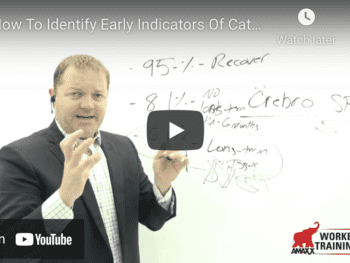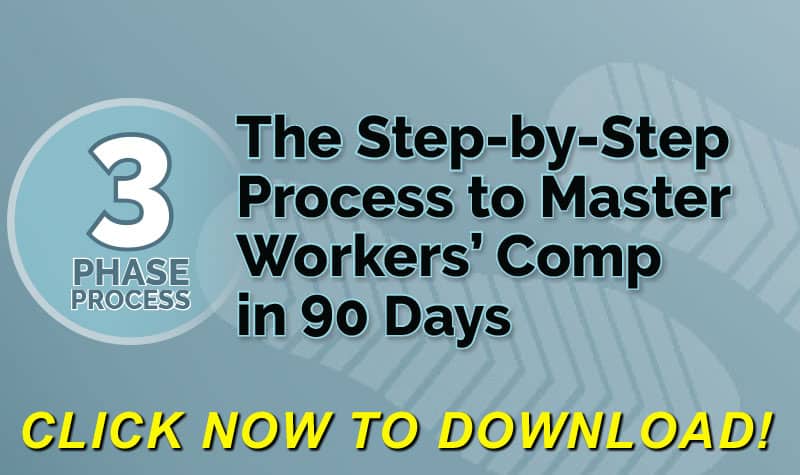Horseplay and lack of safety and loss control mechanisms is a significant driver in any workers’ compensation program. By instituting effective written policies, stakeholders can take a proactive step to controlling costs by preventing unnecessary workplace injuries.
An All Too Common Hypothetical
Frank and Ralph work for Sparky Electric Company. One day Frank is working on a power line about 15 feet above the ground in a cherry picker. Ralph triple-dog-dares Frank to jump to a trampoline located on an adjoin property. Frank accepts the dare, but misses the mark. He breaks both legs and suffers a low back injury. Are these injuries compensable?
Click Link to Access Free PDF Download
Compensability of Horseplay
It is a common misconception that “horseplay” is not compensable. To the contrary, horseplay is often compensable under most state workers’ compensation laws. In evaluating these cases, courts will typically follow the rules outlined in Larson’s Workers’ Compensation Law. These factors include:
- The extent and seriousness of the deviation;
- The completeness of the deviation, i.e., whether it was commingled with the performance of a duty or involved an abandonment of duty;
- The extent to which the practice of horseplay had become an accepted part of the employment; and
- The extent to which the nature of the employment may be expected to include some horseplay.
Important to this discussion in the “prohibited acts doctrine,” and whether the employer’s policies and procedures specifically prohibit the act that results in the workplace injury. No policy can be ironclad and anticipate every aspect of an employee’s conduct while on the job. Certain modifications can be made to promote a safer work environment and reduce workers’ compensation exposure.
Effective Safety and Loss Controls
- Safety Training. The development of an effective safety-training program for all employees is the first step to reducing unnecessary claims in any workers’ compensation program. This training must incorporate all new employees and follow-up programs tailored to the needs of existing persons. Information and assistance on these program is typically available free of charge through a state department of labor or other entities concerned about worker safety.
- Incentive Programs. Employers and other stakeholders concerned about worker safety have seen immediate success in the reduction of work injuries through incentive programs. These incentives include financial bonuses for the reduction of work injuries, as well as other fringe benefits.
- Accident Investigation. Workplace accidents do happen. This is why it is important for an employer to respond to them in an effective manner. Part of this includes empowering employee’s to have confidence that when an incident is reported, it will be properly investigated and resolved with understanding and compassion.
- Other Safety Programs. Any safety program requires buy-in from supervisors and management. If this takes place, the culture of safety will dominate a workplace and the results will trickle-down to other employees.
FREE DOWNLOAD: “Step-By-Step Process To Master Workers’ Comp In 90 Days”
It is also important for employers to communicate all safety expectations clearly. This must include written policies and verbally relaying this valuable information to all members of the team. Reminders placed around the work environment as essential to reinforce the message. Supervisors should talk with their employees on a consistent basis be ensure they understand the message and follow through during the workday.
Discussions regarding safety should also include the issue of horseplay. During these discussions, it should be noted that it creates unnecessary safety risks to the employee, their co-workers and others. When the opportunity arises, specific prohibitions on horseplay should be included in all safety and training materials.
Author Michael B. Stack, Principal, COMPClub, Amaxx Work Comp Solutions. He is an expert in employer communication systems and helps employers reduce their workers comp costs by 20% to 50%. He resides in the Boston area and works as a Qualified Loss Management Program provider working with high experience modification factor companies in the Massachusetts State Risk Pool. He is co-author of the #1 selling book on cost containment, Your Ultimate Guide To Mastering Workers Comp Costs www.reduceyourworkerscomp.com, and Founder of the interactive Workers’ Comp Training platform COMPClub. Contact: mstack@reduceyourworkerscomp.com.
©2015 Amaxx LLC. All rights reserved under International Copyright Law.
SALES TO PAY FOR ACCIDENTS CALCULATOR: http://reduceyourworkerscomp.com/sales-to-pay-for-accidents-calculator/
MODIFIED DUTY CALCULATOR: http://reduceyourworkerscomp.com/transitional-duty-cost-calculators/
WC GROUP: http://www.linkedin.com/groups?homeNewMember=&gid=1922050/
SUBSCRIBE: Workers Comp Resource Center Newsletter
WORKERS’ COMP TRAINING: https://workerscompclub.com
Do not use this information without independent verification. All state laws vary. You should consult with your insurance broker, attorney, or qualified professional.
FREE DOWNLOAD: “Step-By-Step Process To Master Workers’ Comp In 90 Days”














